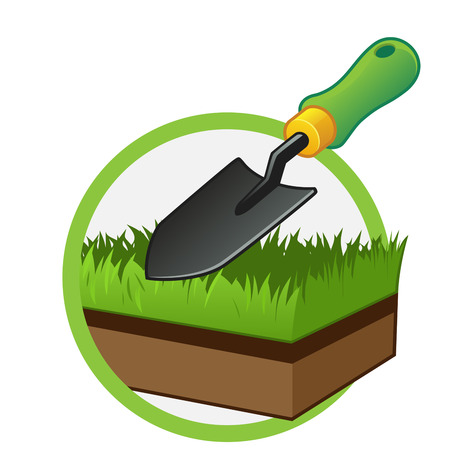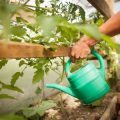1. Understanding Your Garden Zone
Before you start planning your garden month-by-month, its important to understand the climate zone you live in. The United States is divided into planting zones known as USDA Hardiness Zones. These zones help gardeners determine which plants are most likely to thrive at a specific location, based on the average annual minimum winter temperature.
What Are USDA Hardiness Zones?
The USDA Hardiness Zone Map divides North America into 13 zones, each representing a range of temperatures. Each zone is further divided into “a” and “b” subzones for more precision. This system is widely used by gardeners and growers to choose plants that will survive the winter in their area.
USDA Hardiness Zones Overview
| Zone | Temperature Range (°F) | Example Locations |
|---|---|---|
| Zone 3 | -40 to -30 | Northern Minnesota, parts of Montana |
| Zone 5 | -20 to -10 | Chicago, IL; Denver, CO |
| Zone 7 | 0 to 10 | Nashville, TN; Oklahoma City, OK |
| Zone 9 | 20 to 30 | Houston, TX; Orlando, FL |
| Zone 11+ | Above 40 | Southern Florida; Hawaii |
The Role of Microclimates in Your Garden Plan
A microclimate is a localized area where the climate differs from the surrounding region. Even within the same USDA zone, factors like elevation, sun exposure, wind protection, and nearby structures can create unique growing conditions in your yard or neighborhood.
Common Microclimate Types and Their Impact
| Microclimate Type | Description | Gardening Tip |
|---|---|---|
| Urban Heat Island | Cities retain more heat due to buildings and pavement. | You may be able to plant warmer-zone crops earlier in spring. |
| South-Facing Slope | Receives more sunlight and warms up faster in spring. | Use for early vegetables and heat-loving plants. |
| Sheltered Area (e.g., near walls) | Protected from wind and retains heat. | Ideal for tender perennials or extending the season. |
| Low-Lying Area | Tends to collect cold air and frost. | Avoid planting frost-sensitive crops here early in the season. |
Why Zones Matter for Year-Round Planning
Your USDA zone helps guide what you can grow throughout the year. For example, gardeners in Zone 6 might start seeds indoors in February and transplant outdoors in April, while Zone 9 gardeners can grow cool-season crops all winter long. Knowing your zone lets you align your monthly garden tasks with your local conditions for better success.
How to Find Your Zone:
You can look up your USDA Hardiness Zone by entering your ZIP code on the official USDA website or using online tools from trusted gardening sources like local extension offices or plant nurseries. Once you know your zone, youre ready to build a tailored garden calendar that works with—not against—your climate.
This foundational step sets you up for success as we explore month-by-month strategies across different U.S. regions in the rest of this series.
2. Winter Planning and Preparation
Even though winter might seem like a downtime for gardening, its actually the perfect season to prepare for the year ahead. Whether youre in a snowy northern state or a mild southern region, using these colder months wisely can give your garden a strong start when spring arrives.
Garden Planning: Dream Big, Plan Smart
Winter is ideal for reflecting on last years successes and challenges in your garden. Take time to review what worked, what didn’t, and what you want to try this year. Use this opportunity to sketch out your garden layout, rotate crops to prevent soil fatigue, and research plant varieties that suit your climate zone.
Monthly Garden Planning Checklist
| Month | Planning Tasks |
|---|---|
| December | Review last season’s notes, order seed catalogs |
| January | Create planting calendar, plan crop rotation |
| February | Order seeds, finalize garden layout |
Soil Testing: Know Before You Grow
Healthy plants start with healthy soil. Winter is a great time to test your soil so you can amend it before planting begins. Most local extension offices in the U.S. offer affordable soil testing services. They’ll provide detailed results about pH levels and nutrient content, along with recommendations for improving your soil quality.
Basic Soil Testing Tips:
- Collect samples from multiple spots in your garden for accurate results.
- Avoid testing frozen or overly wet soil.
- Send samples early so you have time to apply amendments before spring.
Tool Maintenance: Ready Your Gear
Your gardening tools work hard all year—winter is their time for a little TLC. Clean off dirt and rust, sharpen blades, and oil moving parts so theyre ready when the growing season kicks off. Well-maintained tools not only last longer but also make gardening safer and more efficient.
Essential Winter Tool Care Checklist:
- Clean tools thoroughly with soap and water.
- Sharpen pruners, shears, hoes, and shovels.
- Oil wooden handles and metal parts to prevent cracking and rusting.
- Inventory your supplies—replace anything broken or missing.
By investing time in planning, testing your soil, and caring for your tools during the winter months, youll set yourself up for success when the growing season returns—no matter where you live.

3. Spring Planting Strategies
Spring is an exciting time for gardeners across the U.S.—whether youre in the chilly Northeast or the sunny Southwest, its the season to get your hands dirty and start planting. But spring doesnt look the same everywhere, so understanding your regions climate zone is key. From starting seeds indoors to choosing frost-tolerant crops and refreshing flower beds, here’s how to make the most of your spring garden based on where you live.
Seed Starting Indoors
In colder regions like the Midwest or New England, spring can still bring frosty mornings well into April. Starting seeds indoors gives your plants a head start while you wait for the soil to warm up outside. Use seed trays with grow lights near a sunny window or under fluorescent bulbs. Common vegetables to start indoors include tomatoes, peppers, and eggplants.
| Region | When to Start Seeds Indoors | Common Crops |
|---|---|---|
| Northeast & Midwest | 6–8 weeks before last frost (Feb–Mar) | Tomatoes, Peppers, Broccoli |
| Southeast | 4–6 weeks before last frost (Jan–Feb) | Cucumbers, Squash, Basil |
| Southwest & West Coast | Late winter (Jan) | Lettuce, Eggplant, Chard |
Selecting Frost-Tolerant Crops
If your area still experiences cold snaps in early spring, choose vegetables that can handle a little chill. These hardy crops not only survive light frosts but actually thrive in cooler weather. Think leafy greens and root veggies—perfect for an early harvest.
Crops That Can Handle Frost:
- Kale
- Lettuce
- Spinach
- Cabbage
- Carrots
- Peas
You can direct-sow these into the ground as soon as the soil is workable. Use row covers if youre expecting a late freeze.
Spark Life Back Into Your Flower Beds
Your garden isnt just about food—spring is also the perfect time to revive flower beds and borders. Start by clearing away dead leaves and pruning back winter damage. Then mix in compost or organic matter to enrich the soil before planting new blooms.
Popular Spring Flowers by Region:
| Region | Suggsted Flowers |
|---|---|
| Northeast & Midwest | Tulips, Daffodils, Pansies |
| Southeast | Zinnias, Marigolds, Petunias |
| Pacific Northwest | Daffodils, Primroses, Bleeding Hearts |
| Southwest & California Coast | Lantana, Salvia, Geraniums |
No matter where you’re gardening from, planning around your local climate and conditions will help you get a strong start this spring. With the right timing and plant choices, youll be enjoying vibrant blooms and healthy veggies in no time.
4. Summer Maintenance and Harvest
Summer is one of the busiest times in the garden. With the sun high and temperatures soaring, your plants are growing fast—but so are weeds, pests, and watering needs. Heres how to stay on top of summer garden care and make the most of your harvest.
Watering Smart
Hot weather means thirsty plants, but watering smart can save time, water, and keep your garden thriving. Here are some tips:
- Water early or late: Water in the morning or evening to reduce evaporation and help roots absorb moisture efficiently.
- Soak deeply: Instead of frequent shallow watering, aim for deep soaking once or twice a week. This encourages deep root growth.
- Use mulch: Add 2–3 inches of organic mulch like straw or shredded bark to retain soil moisture and reduce surface evaporation.
- Drip irrigation: Consider installing a drip system or soaker hoses to deliver water directly to plant roots with minimal waste.
Pest Control in Peak Season
Pests love summer as much as your vegetables do. Stay ahead of infestations with these strategies:
- Inspect regularly: Check leaves, stems, and undersides for signs of pests like aphids, beetles, or caterpillars.
- Encourage beneficial insects: Invite ladybugs, lacewings, and praying mantises by planting flowers like dill, fennel, and marigold nearby.
- Nontoxic solutions: Use insecticidal soap or neem oil sprays for natural pest control that won’t harm pollinators.
- Crop rotation & spacing: Rotate crops each season and give plants enough space to increase air flow and reduce disease risk.
Bumper Crops: Boosting Bloom and Vegetable Production
The long days of summer mean more sunlight for fruiting plants—but they need some help from you to reach full potential. Try these tips to maximize production:
- Deadhead flowers: Regularly remove spent blooms on annuals like zinnias and petunias to encourage more flowering.
- Pole support: Use cages or stakes for tomatoes, beans, and cucumbers so fruits don’t rot on the ground.
- Pinch back herbs: Pinch off flower buds on basil and mint to keep them producing flavorful leaves longer.
- Sidedressing nutrients: Mid-season fertilizer boosts growth—use compost tea or balanced organic fertilizer around heavy feeders like squash and peppers.
Summer Garden Task Checklist
| Task | Frequency |
|---|---|
| Watering (deep soak) | 1–2 times per week |
| Weeding | Weekly |
| Pest inspection | Every 2–3 days |
| Harvest ripe vegetables | Daily or as needed |
| Mulch check/top-up | Monthly |
This hands-on approach during summer ensures your garden stays productive through the hottest months while setting up for a strong fall transition. Keep tools handy, stay hydrated yourself, and enjoy the rewards of your efforts daily!
5. Fall Transitions and Cool-Weather Crops
As summer winds down, fall becomes a key time to keep your garden productive and prepare for the colder months ahead. Whether you’re in the North dealing with early frosts or enjoying a mild Southern autumn, planning ahead helps make the most of this transitional season.
Planting Late-Season Vegetables
Fall is perfect for cool-weather crops that thrive as temperatures drop. These vegetables not only tolerate frost but often taste better after it. Depending on your USDA hardiness zone, you can direct-sow seeds or transplant seedlings in late summer through early fall.
Popular Cool-Weather Crops
| Vegetable | Ideal Planting Time (Zone 5-7) | Days to Harvest |
|---|---|---|
| Spinach | Late August – Early September | 35-45 days |
| Kale | August – September | 50-70 days |
| Radishes | September – October | 20-30 days |
| Lettuce | September – Early October | 30-60 days |
| Carrots | Late July – August | 70-80 days |
Preparing Perennials for Winter
Your perennial plants need attention in fall to ensure they survive winter and bounce back strong in spring. Here are simple steps to take:
Fall Care Checklist for Perennials
- Cut back dead foliage: Trim away dying leaves and stems after the first frost to prevent disease and pests.
- Add mulch: Apply 2–3 inches of mulch around the base of perennials to protect roots from freeze-thaw cycles.
- Divide overgrown plants: Fall is a great time to divide hostas, daylilies, and other clumping perennials.
- Water deeply: Give perennials a good soak before the ground freezes, especially if fall has been dry.
Sowing Cover Crops for Soil Health
If youre wrapping up your garden season or leaving beds empty, planting cover crops (also called green manure) is a smart way to enrich soil over winter. These crops reduce erosion, suppress weeds, and add nutrients when turned into the soil in spring.
Common Fall Cover Crops
| Cover Crop | Main Benefit | Sow Time (Zones 5-8) |
|---|---|---|
| Cereal Rye | Erosion control, weed suppression | September – October |
| Clover (Crimson or Red) | Nitrogen fixation, pollinator-friendly | September – October |
| Austrian Winter Peas | Nitrogen fixer, adds organic matter | Mid-September – Early October |
Pro Tip:
If you’re new to cover cropping, start with something easy like cereal rye—it’s hardy and fits well into most regions across the U.S. Just be sure to mow it down in spring before it goes to seed.
Taking these steps during fall not only extends your harvest but also sets up your garden for success next year—one season at a time.
6. Year-Round Gardening Tips for Every Climate
Gardening in the U.S. can be as diverse as its landscapes. From the arid deserts of Arizona to the frosty winters of the Midwest, each region has unique challenges and opportunities. Here are practical, month-by-month gardening tips tailored to different American climate zones to help your garden flourish no matter where you live.
Understanding Your Climate Zone
The USDA Plant Hardiness Zone Map divides the country into zones based on average minimum winter temperatures. Knowing your zone helps you choose plants that can thrive year-round. You can find your zone by entering your ZIP code on the USDA website.
Regional Gardening Strategies
Here’s a quick guide to year-round gardening strategies based on five major U.S. climate regions:
| Region | Key Characteristics | Monthly Gardening Focus |
|---|---|---|
| Northeast | Cold winters, warm summers, distinct seasons | Start seeds indoors in late winter; plant cool-season crops in spring/fall; mulch heavily before first frost |
| Southeast | Hot, humid summers; mild winters | Plant heat-tolerant crops early; manage pests in summer; grow greens through winter |
| Midwest | Cold winters, hot summers, occasional droughts | Use raised beds for spring planting; water deeply during dry months; harvest root crops before frost |
| Southwest | Arid climate, extreme heat, low humidity | Focus on drought-resistant plants; use shade cloths in summer; fall is ideal for cool-season veggies |
| Pacific Northwest | Mild temps, frequent rain, short summers | Select moisture-loving plants; ensure good drainage; start seeds indoors early for summer harvests |
Monthly Reminders for All Climates
- January–February: Plan your garden layout and order seeds.
- March–April: Start seeds indoors or sow early crops depending on your region.
- May–June: Transplant seedlings outdoors after last frost; monitor soil moisture.
- July–August: Water deeply and often; watch for heat stress and pests.
- September–October: Plant fall crops like kale and carrots; clean up summer beds.
- November–December: Add compost and mulch; protect perennials from cold snaps.
Pro Tip:
If youre gardening in a challenging area like a high-altitude or coastal zone, look for local extension services or master gardener programs—they often have highly specific advice tailored to your microclimate.
Your Garden Can Thrive Year-Round!
No matter where you live, understanding your local conditions is key. With a little planning and regional know-how, you can enjoy beautiful blooms and bountiful harvests throughout the entire year.


